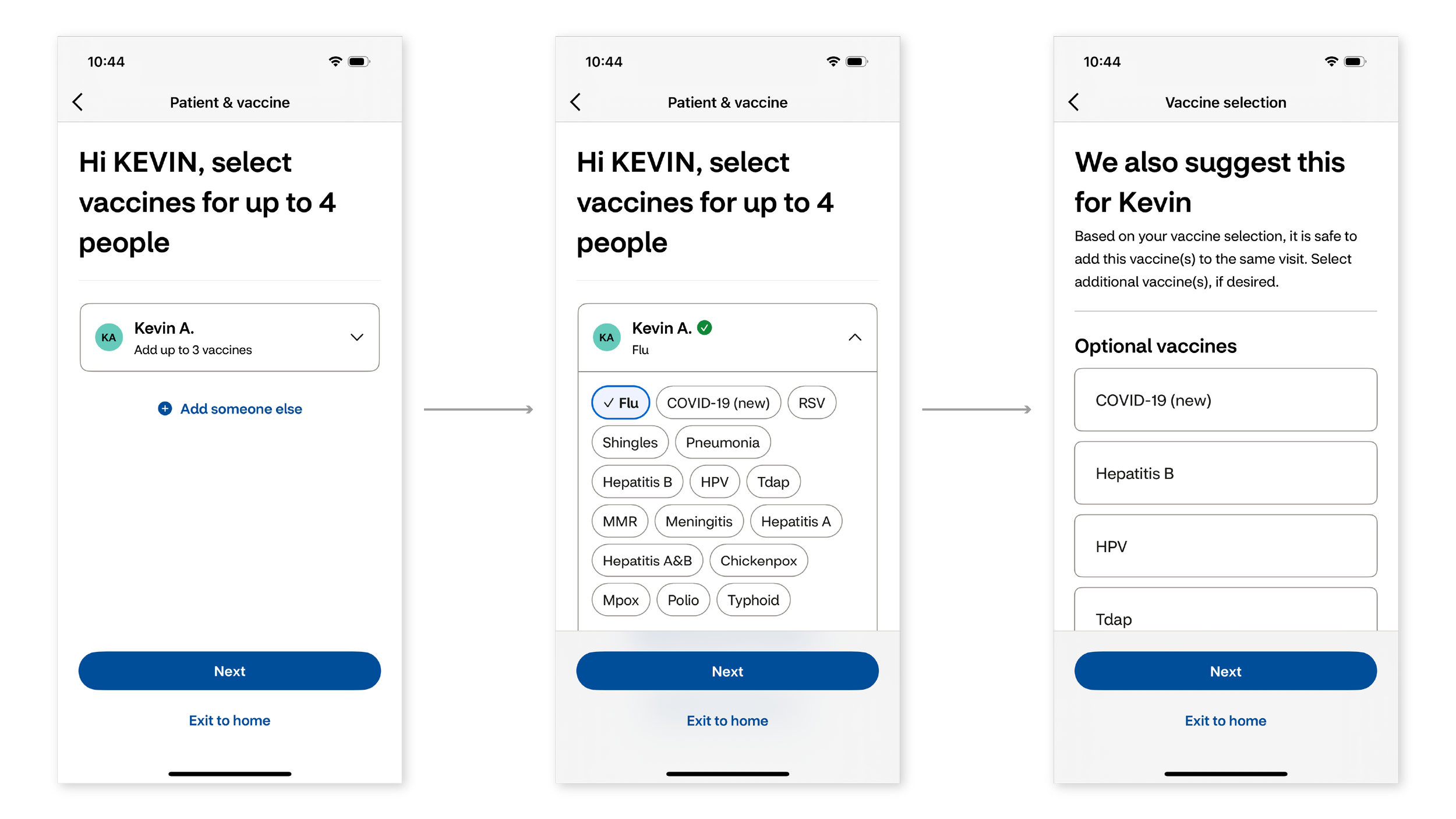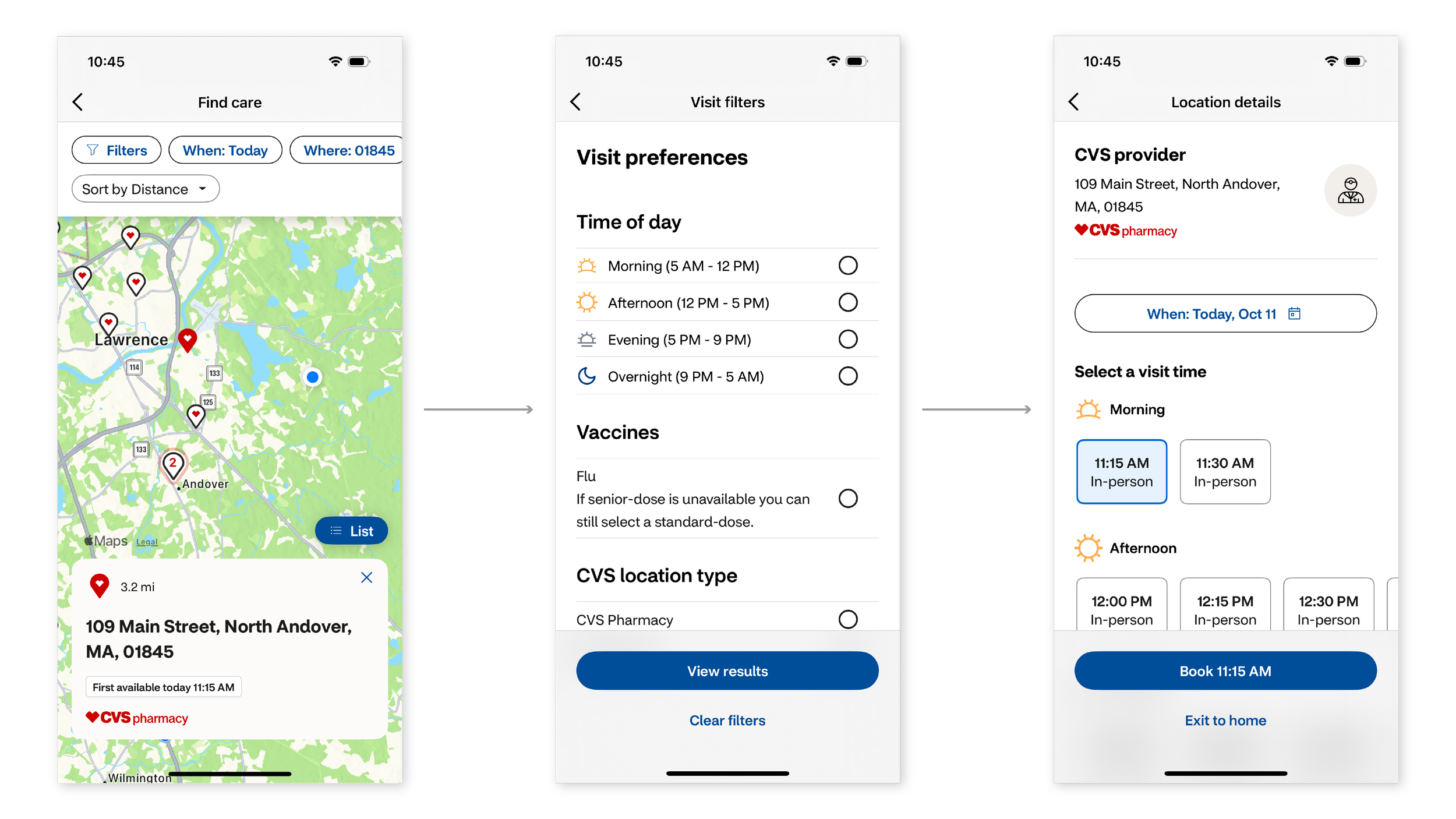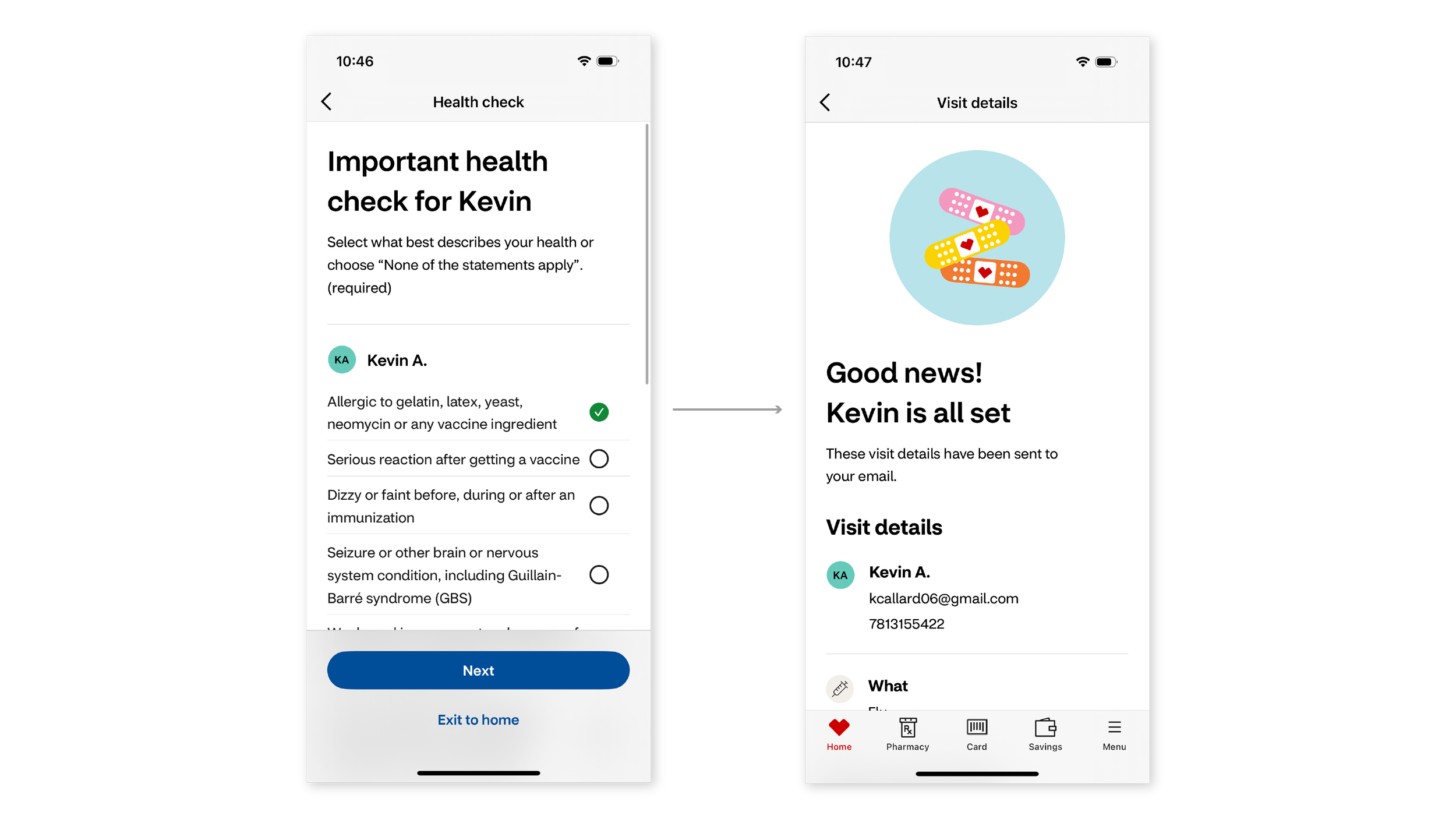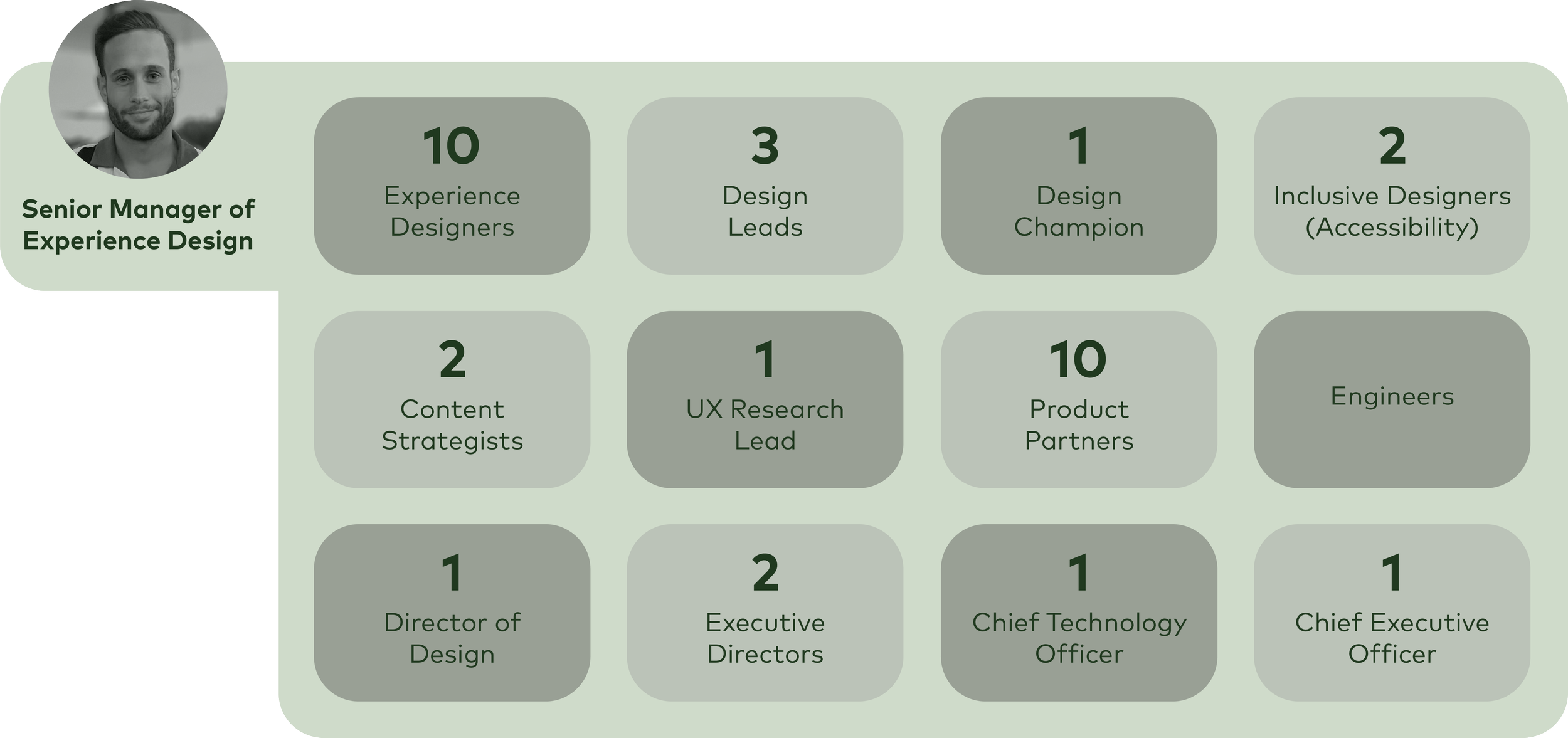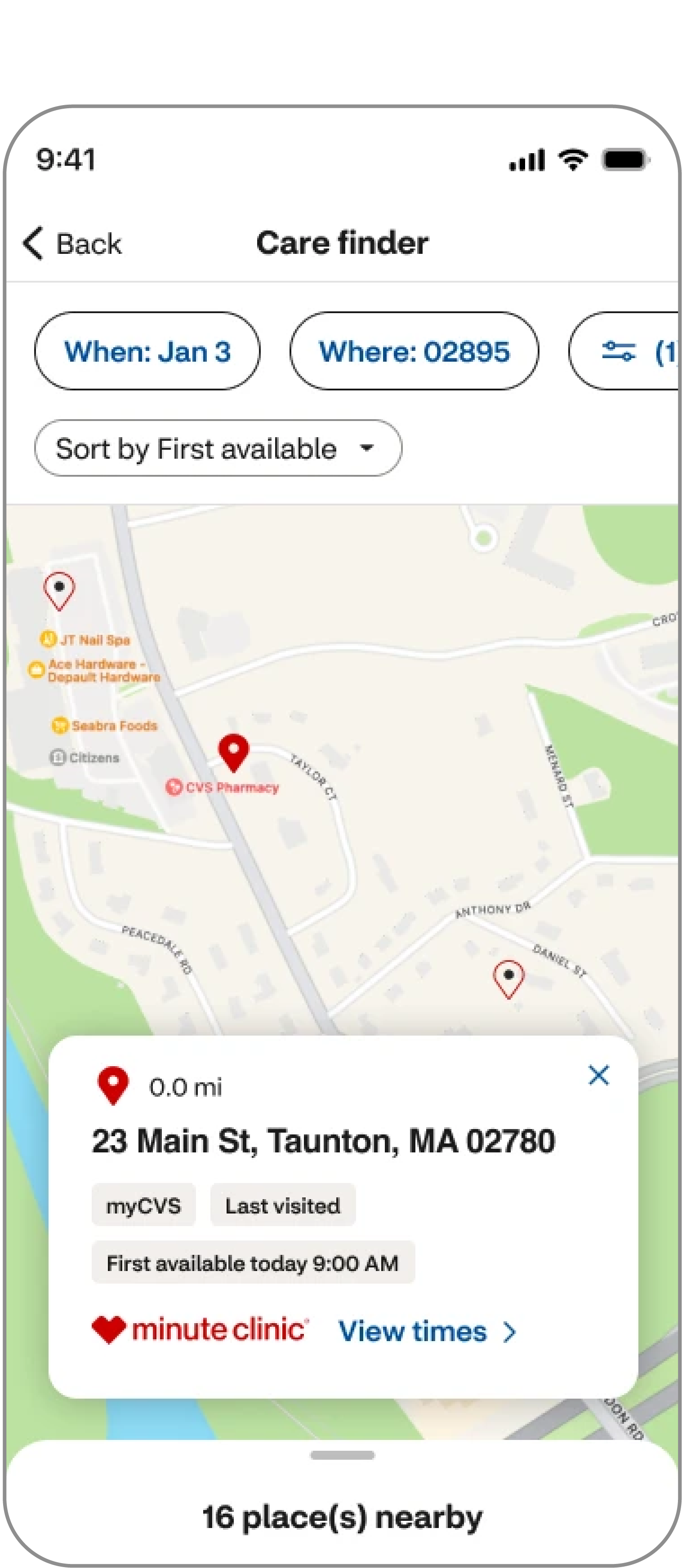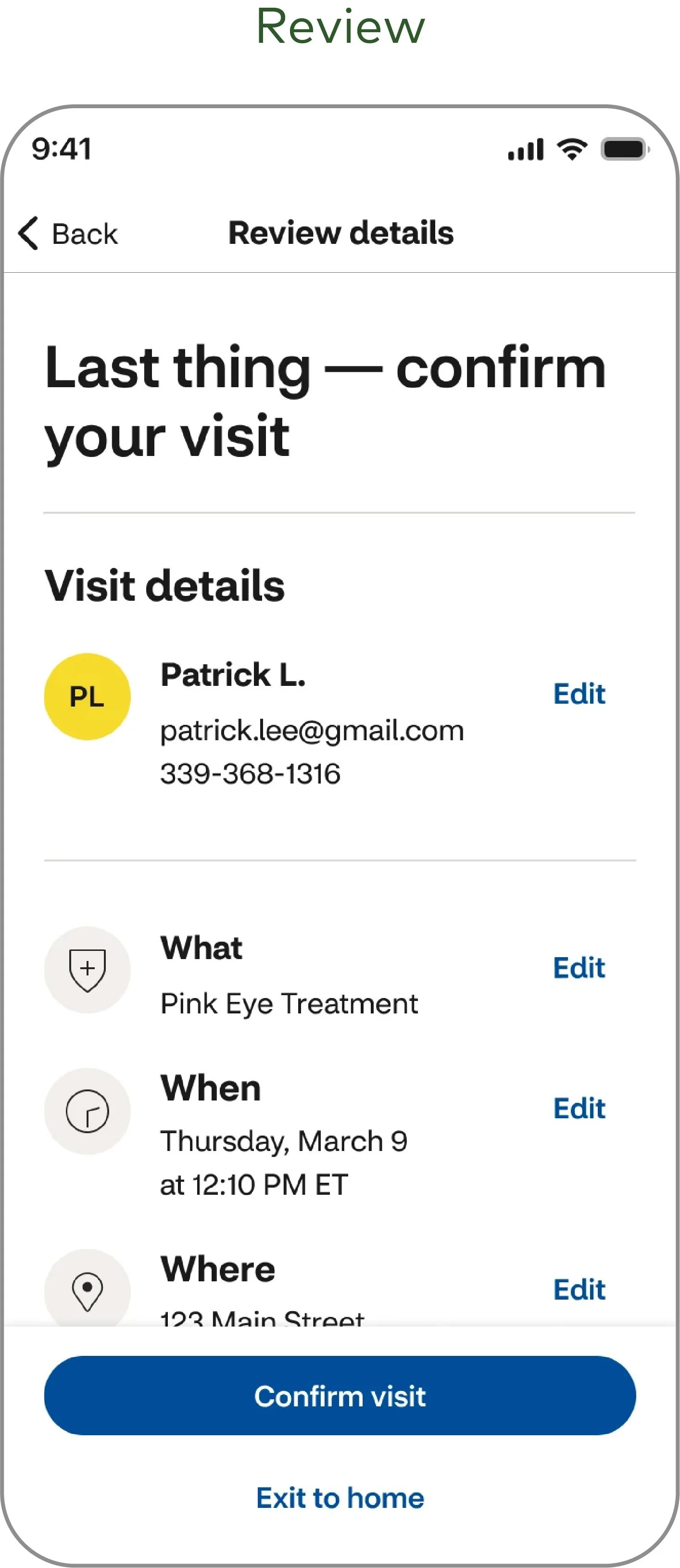CVS Health Super App
The objective
To deliver a flawless 0-1 end-to-end next generation scheduling app experience streamlining all of scheduling to give a more personalized, customizable experience to the user.
Simple. Fast. Scalable.
Existing customer pain points
The absence of an existing app-based scheduling solution, leading to inefficiencies and a fragmented user experience.
Knowing our audience
To ensure delivery of a flawless Next Generation Scheduling experience as part of a larger 0-1 Super App initiative I led a team of 10 talented Experience Designers overseeing all phases of digital product design from start to end including UX strategy, competitive analyses, journey maps, wireframes, high-fidelity designs, QA, and testing.
Providing strategic guidance, mentorship, and design feedback to my team, I ensured a cohesive user experience while maintaining brand consistency. Advocating for user-centric data-driven design, I collaborated and communicated design decisions effectively to stakeholders and executive business partners. At each step in the Design process I worked in lockstep with partners from our Product, Engineering, Research, Content, and Accessibility teams to ensure alignment across disciplines.
Overview
The team
+21% conversion
Sign in to Clinic Locator
-15% conversion
Clinic Locator to Patient Info
+92% conversion
Review to Confirmation
Design iterations after testing and data
Sticky CTA blocking required actions
Sticky call-to-action
Several participants moved forward during scheduling and struggled to view appointment times, or missed required input fields.
Required consent was hidden upon page load
Overcoming challenges
-
This undertaking was of the highest priority to CVS Health. I orchestrated frequent Design Reviews with Executive stakeholders, partnering with my Design team to prepare, and created a Weekly Design / Product / Engineering sync to align earlier in the process and save time and resources. This alignment meeting sped up our feedback cycle by 70% . Feedback and priorities were ever-changing. It was my job to prioritize, look to the data to inform next steps, and strategize the best course of action for our iterative process.
-
As the Design Manager of the sole team that would be completely re-inventing all of these scheduling experiences, it was my responsibility to align early with my Product and Engineering partners to create and maintain the Design roadmap. This involved intaking, understanding, and assigning the work to the right Designers in order to ensure XDs with the right experience, working style, and skill set were taking on the work. If I was able to pair the right Designers with the work, I could ensure the best possible end product for our users.
-
Because things were moving at such a fast pace, and priorities were shifting frequently, Designers quickly became discouraged with the uncertainty of their day-to-day. It was my job to keep the team morale high, strategizing different ways of getting work done, asking more questions of our stakeholders, offering more Face-time, recognizing Designers achievements and small wins, helping them to pace their work out, and create design processes to find efficiencies in the ways we were working.
-
Due to the speed at which we were working, my team was unable to garner feedback from our users for the complex UX scenarios we were solving before launch. Because we were introducing many novel patterns, this made our previous research initiatives all the more valuable.
We had to lean on our previous data, with a plan to quickly iterate and remediate any low-performing steps in our flow as soon as the product went live.
Although this was counter to our standard UX process, this fostered collaboration and unity amongst the team, relying on one another each step of the way.
Once the product launched, we initiated A/B tests, as well as moderated and unmoderated tests to optimize and add features to the experience. -
Because there was so much work being done all at once, there was also a ton of work being delivered to our Developers all at once!
This led to lots of QA work needing to be done simultaneously on brand new long complex flows across 4 platforms, leveraging 4 brand new Design toolkits.
I helped to alleviate the bottleneck that QA had become by instituting a brand new QA Process for our team, implementing 1:1 Design:Developer pairing, where an XD and Developer could sit down in a room together and QA/make code changes in real time.
This sped up our defect remediation process by 1600% allowing our Engineering team to get thru ~500 defects in a matter of weeks.
This led to 0% defect leakage and limited user error rate significantly.
